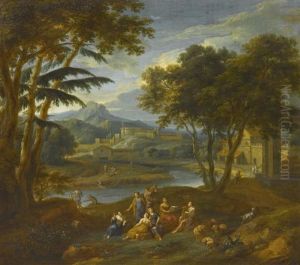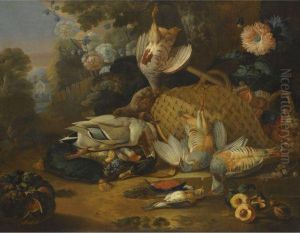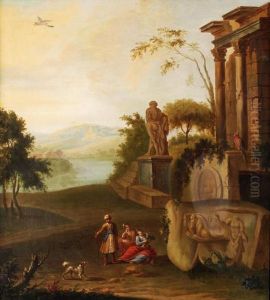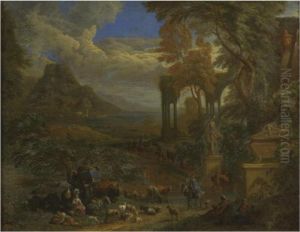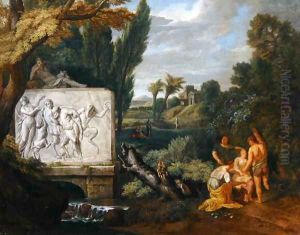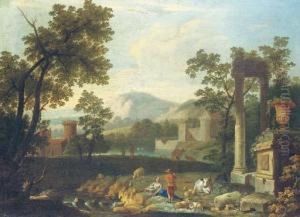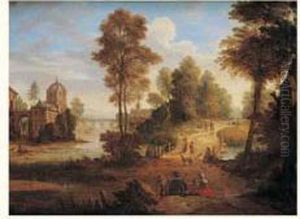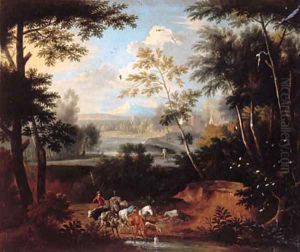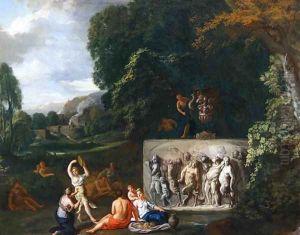Pieter Rysbrack Paintings
Pieter Andreas Rysbrack, born in Antwerp, Belgium, was a Flemish painter known for his still life and game pieces. He was part of the Rysbrack family of artists, which included his more famous younger brother, Michael Rysbrack, a renowned sculptor in England. Pieter's artistic style was influenced by the Baroque period, and he often painted with a rich and dynamic composition, showing a strong sense of realism through the texture and detail of objects, particularly in his depictions of dead game and animals.
Rysbrack moved to England around 1720 and established himself in London. His works were appreciated for their meticulous attention to detail and composition, which often included a variety of objects such as dead game, fruit, and flowers. These paintings not only displayed his talent for texture and color but also reflected the period's interest in hunting and collecting.
In England, Rysbrack worked among a thriving community of Flemish and Dutch artists who brought their artistic traditions to the British art scene. He contributed to the taste for still life paintings, which was growing in popularity among the British aristocracy and the burgeoning middle class.
Despite his talents and contributions to the art world, Pieter Rysbrack remained relatively overshadowed by his brother Michael, whose sculptures were in high demand by the British elite. Nevertheless, Pieter's works can be found in various art collections, and his paintings continue to be studied for their contribution to the still life genre in the 18th century.
Rysbrack's death in London in 1770 marked the end of his life, but his legacy lived on through his paintings, which captured the essence of his era's artistic and cultural trends. His works are a testament to the skill and craftsmanship of Flemish artists in Britain during the 18th century.

